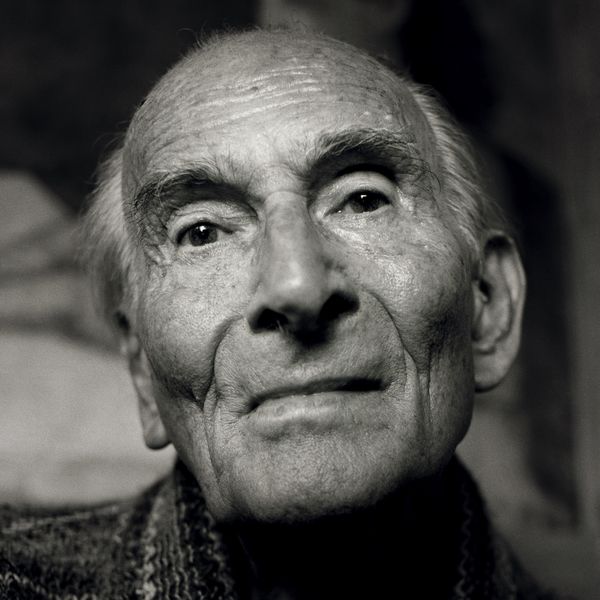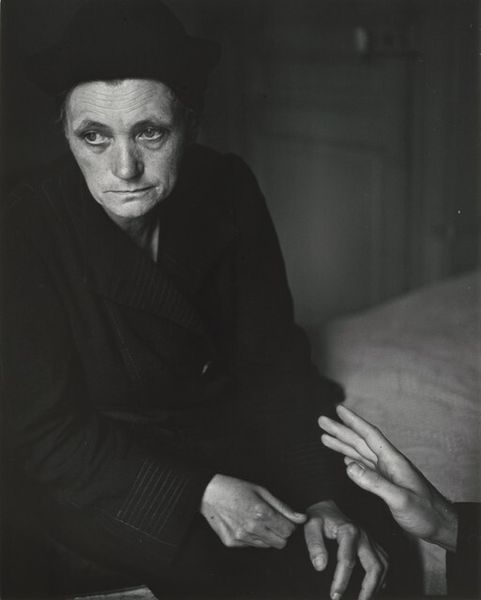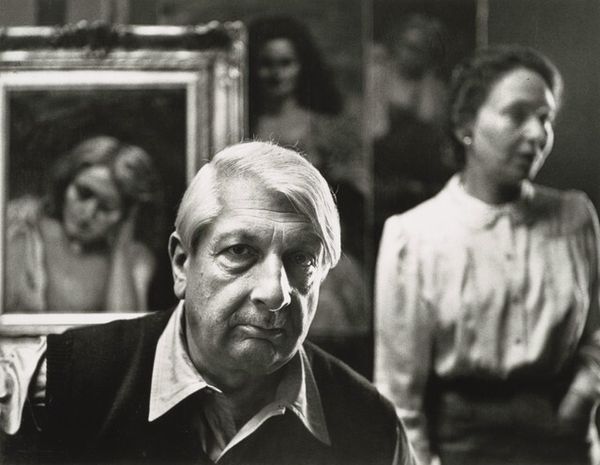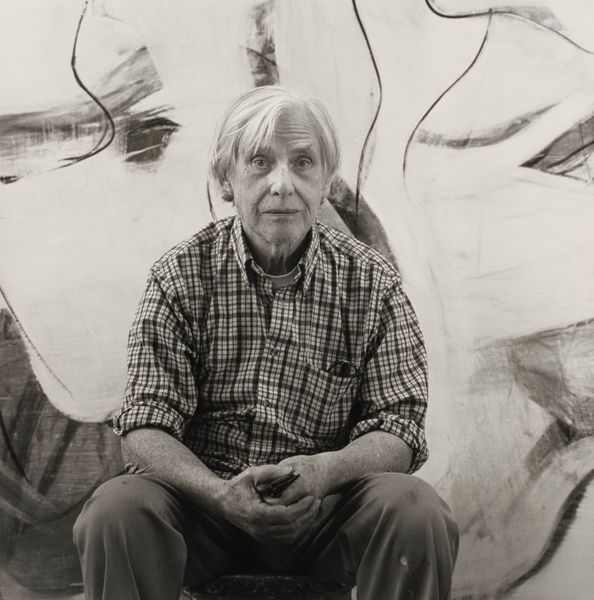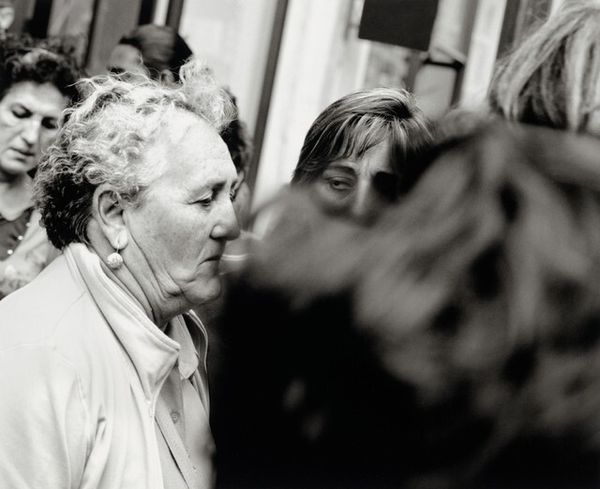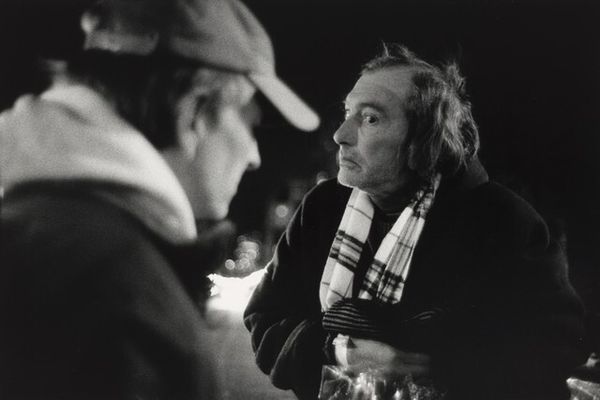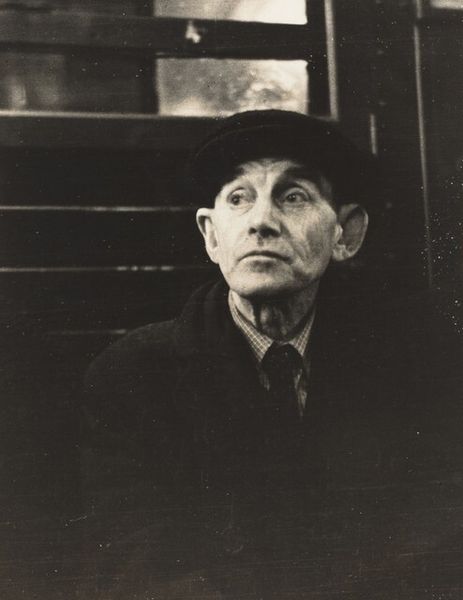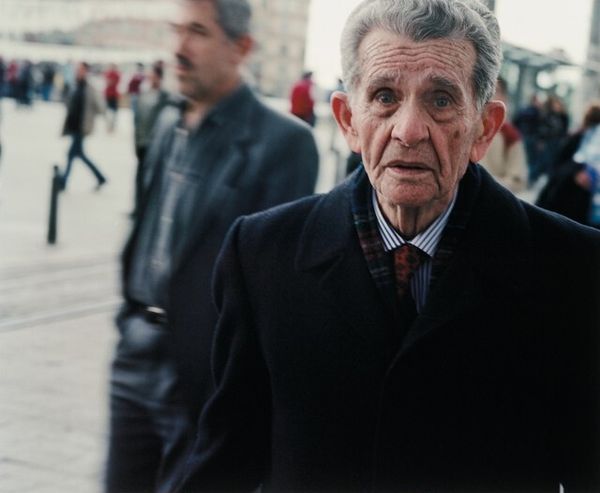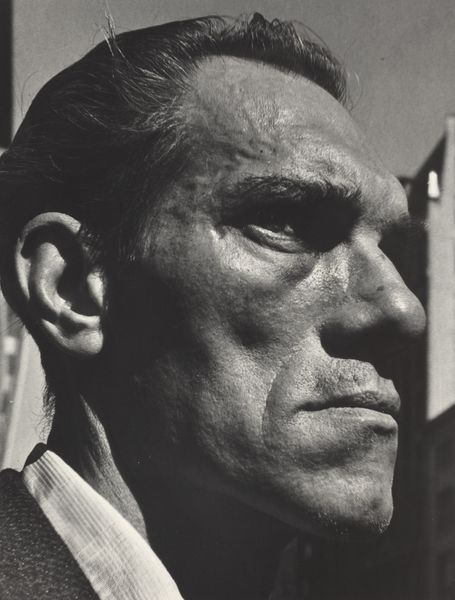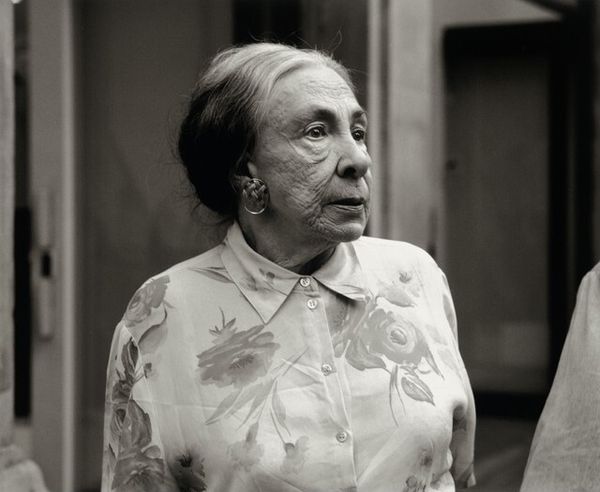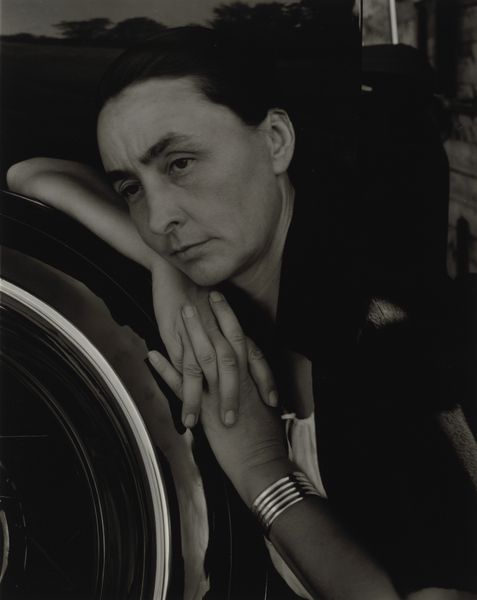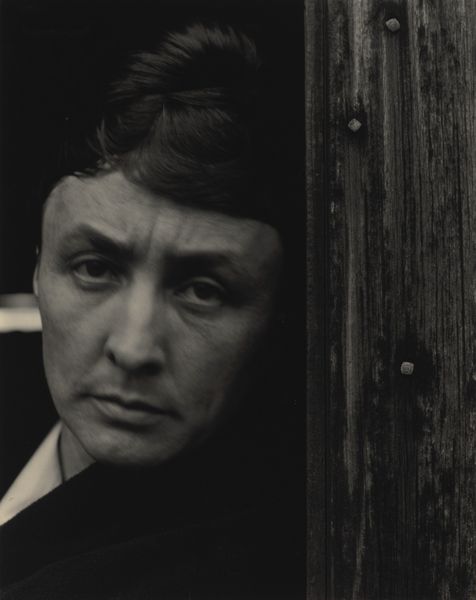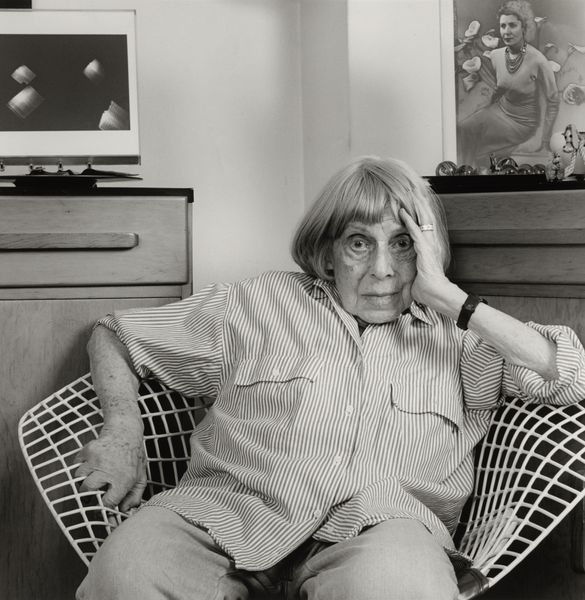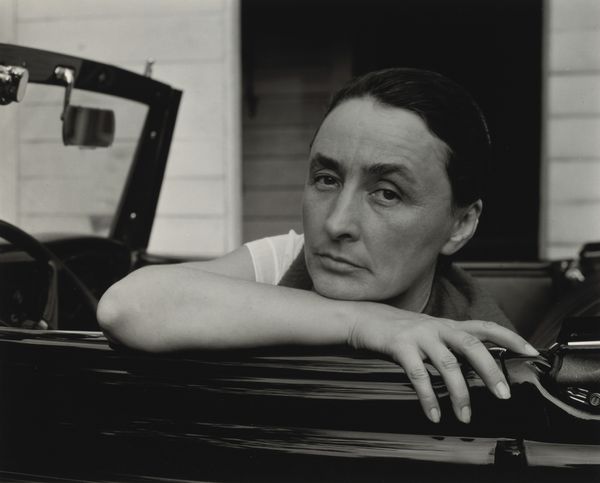
photography
#
portrait
#
photography
#
monochrome
Copyright: Creative Commons
Editor: Here we have Oliver Mark’s 2006 photograph, “Hans Neuenfels.” It's a monochrome portrait, and I’m immediately drawn to the contrast between the sharp focus on the subject's face and the softer, almost blurred background. It feels very classic, almost like a study in textures. What elements stand out to you most in this image? Curator: For me, the power lies in understanding the photograph's production. Consider the labor involved: Mark, as the photographer, mediating his vision through the camera, chemicals, and paper. What kind of labour went into creating the sculpture behind Neuenfels? The material of these sculptural elements too plays a role; we assume them to be cold stone that contrasts the apparent vulnerability of the man in the foreground. How does Mark leverage the materiality of photography itself—the darkroom process, the choice of paper—to create this mood? Editor: So you're thinking about the materials and processes involved, rather than the immediate aesthetic impact? Curator: Exactly. What statement is being made by photographing Neuenfels alongside a statue? How might these combined visual objects affect the viewer's interpretation? This photo also challenges conventional notions of portraiture. It isn’t just about capturing a likeness but presenting an image steeped in material choices and embedded with questions about art and labour. Editor: That’s interesting, I hadn’t considered how the choice of black and white film influences the experience, making it feel so rooted in the past. Curator: Precisely. Think about the accessibility of photography, its shift from elite practice to widespread consumption. Is Mark making a comment on that transformation through the conscious deployment of traditional techniques? This returns us to considering the artist's material means as critical to the image's overall effect. Editor: I see your point. By focusing on the means of production, we gain a deeper appreciation for the photograph’s constructed nature and its place within art history. Curator: Right. It reveals the web of labour, materiality, and even consumption that constitutes the artwork, moving beyond simple aesthetics. Editor: I’ve definitely got a lot to think about! Thanks for shifting my perspective.
Comments
No comments
Be the first to comment and join the conversation on the ultimate creative platform.
